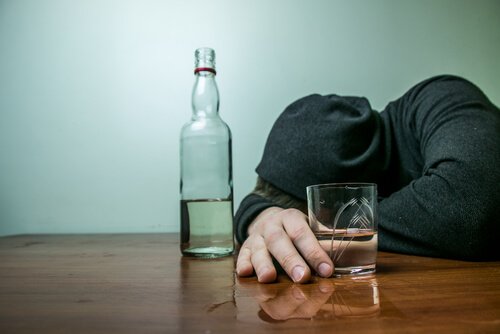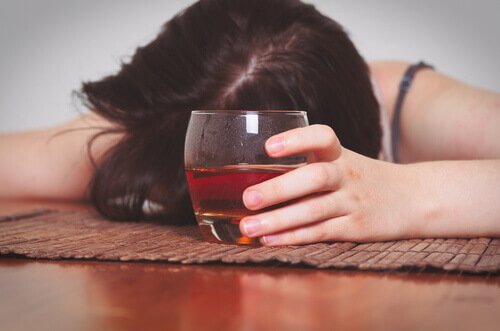Drunkorexia: A New Eating Disorder

Although not many people know about this new eating disorder, it’s on the rise. Drunkorexia is a very serious eating disorder that’s present in today’s society. Those who suffer from drunkorexia choose to replace the calories that food provides with those in alcoholic beverages with the intention of losing weight.
Not eating the right amount of food can lead to an anemic process that can have severe repercussions in the long run. Think about all the damages a person does to their body when they consume large amounts of alcohol on a regular basis. If you add fasting to the equation, it’s a recipe for disaster. This condition entails two really big issues: an eating disorder and an alcohol addiction.
Drinking instead of eating
People who suffer from drunkorexia are very worried about their weight. Despite this, though, they prefer not to go see a health professional that could show them proper, nutritious diets to follow. As in any other eating disorder, they take their obsession with losing weight to the extreme where they stop eating and decide to drink alcohol in large quantities instead.
The main goal of people with drunkorexia is losing weight by doing the two things mentioned above. On one hand, they recklessly inhibit their food intake and, on the other, they consume alcohol excessively. They consider the latter a substitute for their diet. This can be so dangerous to one’s health that it may even lead to death.

Comorbidity
Experts consider drunkorexia as an eating disorder not otherwise specified (EDNOS) which, in many cases, goes hand-in-hand with bulimia and anorexia. On multiple occasions, these people induce vomiting to get rid of the extra calories that alcohol may have given them.
However, there may be cases of drunkorexia that aren’t related to other eating disorders. Basically, the person eats very little (and unhealthily) and drinks alcohol very regularly.
Physical consequences
The most serious consequence of drunkorexia is the possibility of going into ethyl coma. A large amount of alcohol in the blood can cause this. Remember that people absorb alcohol easier and faster when they consume it on an empty stomach, which is precisely what those with drunkorexia do. This can make their whole organism collapse because it’s impossible to counteract such dehydration. Overdosing on alcohol can cause cirrhosis and death.
Additionally, malnutrition can cause anemia, which is usually a very clear symptom. Low levels of vitamins and minerals may cause amenorrhea, muscle weakness, and difficulty falling asleep and concentrating, among other things.
More consumption equals greater tolerance
The difficulty overcoming any addiction lies in the growing need to consume more and more of the substance in order to achieve the desired effect. This phenomenon is known as “tolerance”. For example, the first day, we only needed 2 glasses of alcohol to feel a pleasant sensation. On the third day, we needed 3. Two weeks later, we felt the need to drink 5. This goes on and on until the required quantities are colossal.
This phenomenon occurs in drunkorexia. Each time someone adopts this addictive behavior, they start requiring a greater alcohol intake to suppress their appetite.

Population at risk
Nowadays, young people are consuming more and more alcohol. On many occasions, they skip meals because they know that they’ll be consuming alcohol during the night. Young women are the ones who tend to be more concerned about their physical appearance. However, it’s important to note that many young men are also insecure about their identity and body.
Therefore, parents must be alert to possible indicators of this type of behavior, especially when their children are developing. Preventive education is essential. It’s also important to talk to them about the negative effects of malnutrition and alcoholism.
Treatment for drunkorexia
Drunkorexia is an eating disorder that isn’t yet contemplated in psychological diagnosis manuals. However, it must be treated as a whole. On one hand, a clinical and toxicological control must be carried out with blood tests that will allow medical professionals to know the patient’s condition. On the other hand, psychological therapy and nutritional counseling are necessary.
This text is provided for informational purposes only and does not replace consultation with a professional. If in doubt, consult your specialist.








